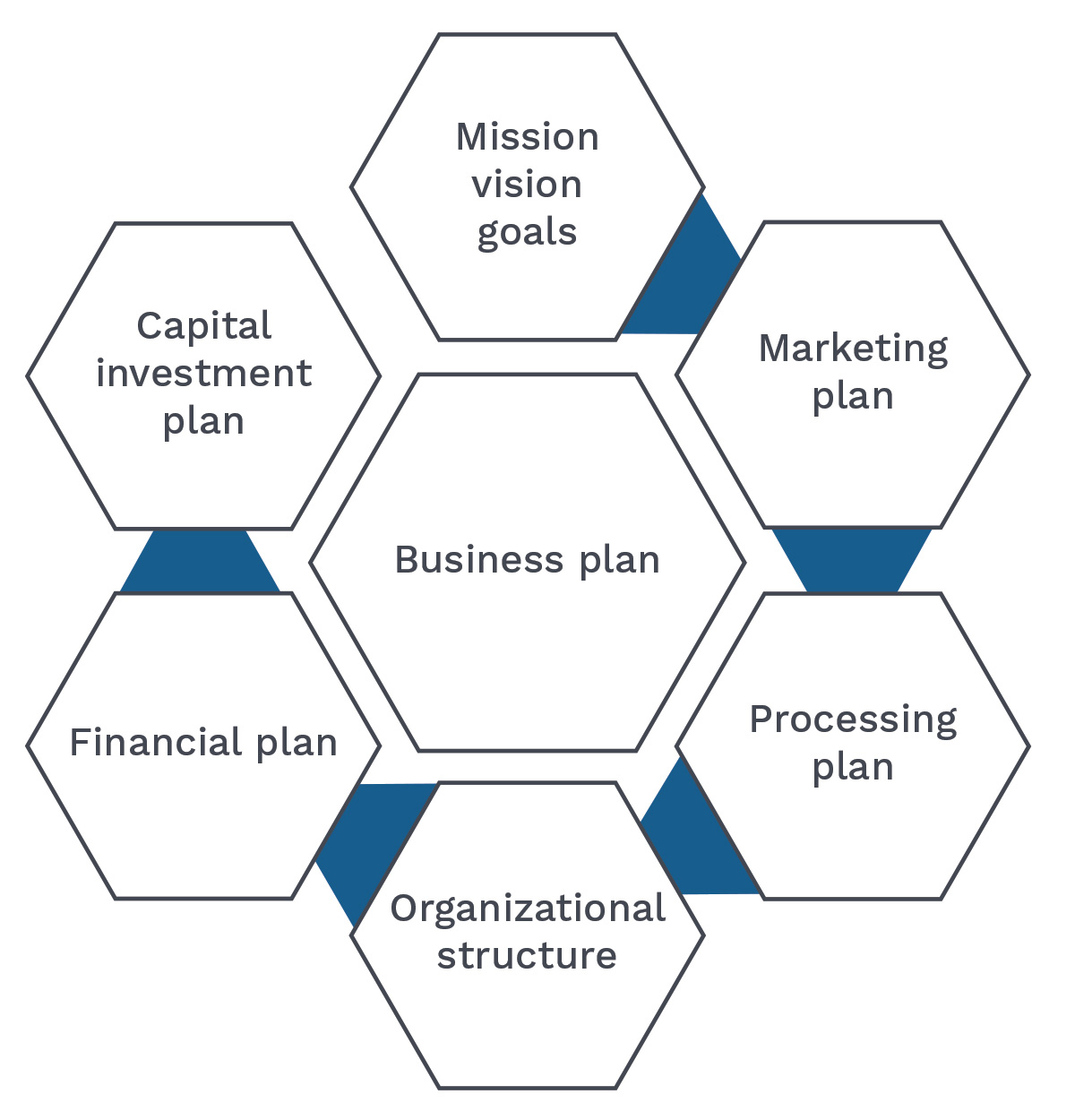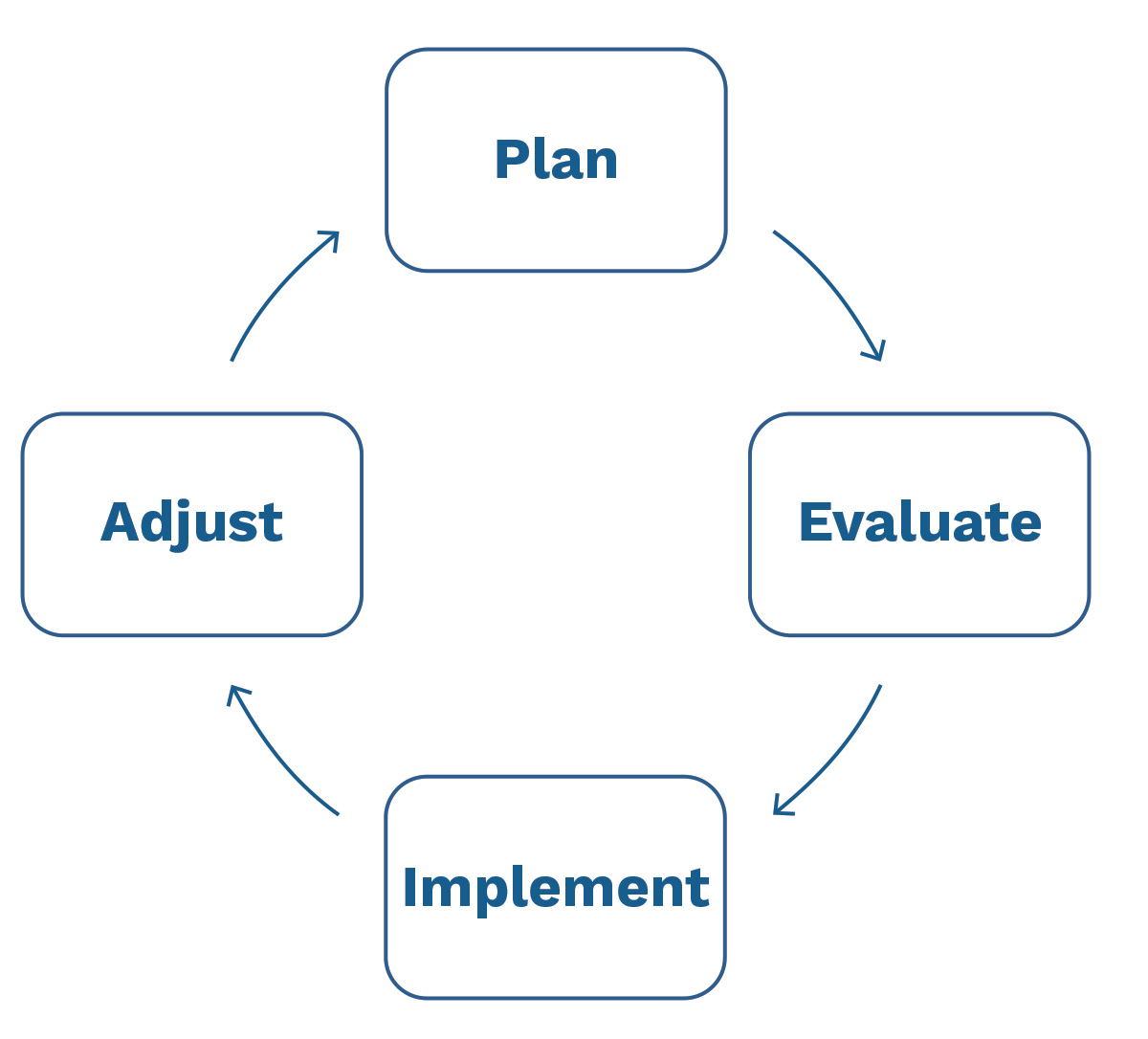Farms start value-added enterprises for many reasons. A dairy may have a high cost of production for the commodity milk market. More revenue may be needed to pay an additional owner or a retiring generation. The farm may produce a niche product like A2A2 milk. Most importantly, farm owners may consider value-added because the market demands it, when the community expresses a need for a certain product that this farm can supply.
Before starting, consult your state’s Department of Agriculture for guidance on regulations around food safety, labeling, standards of identity, and equipment and processing requirements that are beyond the scope of this article.
When deciding if value-added is the best next step, first go back to the foundations: the mission, vision, and goals of the farm and family operation.
- Mission Statement: Tells a stakeholder who the farm is and what it does.
- Vision Statement: Tells a stakeholder why the farm does what it does. The vision of the farm conveys the farm’s values and where the farm wants to be in the future.
- Goals: Define priorities for the farm, its owners, and managers. Goals should follow the SMART Model: Specific, Measurable, Achievable, Realistic, and Time-bound.

CREATE A MARKETING PLAN
A business plan includes the farm’s mission, vision, and goals, and adds the marketing, processing, and financial plans. With a new value-added venture aligned with the farm owner’s values, the next step is to analyze the existing market and how a new product meets demand. To begin, review the five Ps of marketing: Product, Price, Place, Promotion, and People to outline how the product meets the market’s needs.
The marketing plan is a key step to define the business model. Will the farm convert to a retail storefront? Supply to restaurants? Or use a wholesale model selling to other businesses? Each has a unique marketing strategy. For dairy, value-added splits from traditional commodity markets with the enterprise needing storage, processing, packaging equipment, and potentially retail space. If possible, space can be rented in an existing facility under a co-pack model to test the product and establish a market before investing in processing equipment for the farm.
The work plan defines who will do the work at the primary operation and the new processing enterprise. How will existing work get done, are new staff are needed, and how will responsibilities shift?
Business plans also include financial projections, including monthly and annual income and expense statements and a capital investment plan. Because the venture is new, background research is key to use realistic numbers for this specific operation. This includes researching the actual cost of the components in the product like sugar, flavoring, or packaging, and understanding the added labor needs based on the production and sales models the farm plans to use.
When it comes to the capital investment, review whether facility improvements are needed, including access to a loading area for product, storage, delivery vehicles, and waste capacity for any byproducts associated with production.

SOURCES OF CAPITAL
Traditional agriculture usually thinks of debt as the main source of capital to finance any type of investment on the farm. While a commercial lender is a viable option, farm owners should also talk with economic development groups, the Small Business Administration, or a similar agency whose goal is to increase economic viability of small businesses and provide jobs. Leasing both vehicles and facilities can also be considered.
Another option is to seek investment opportunities from interested parties that provide financing for a percentage of equity or profit. Other sources of capital can be raising money by selling memberships or community supported agriculture (CSA) programs, or grants for both working capital (costs of processing and marketing) and infrastructure.
PLAN FOR BALANCING
Balancing is one area many people ignore but can have a big impact on supply and customer relationships. Farms may have a processor that will pick up excess supply for the commodity market, but increasingly processors are less receptive to these arrangements. Because dairy production and demand are both seasonal, planning to match supply with demand is crucial to keep shelves full when consumers want to buy what the farm is selling. Farms can balance through buying and selling cows, creating a side business that uses the excess supply, or dumping milk (remember to plan for more waste capacity). Other herd management strategies like seasonal calving, milking two versus three times, or adjusting the ration can have effects that last much longer than intended.
ADOPT A PEOPLE-FIRST MINDSET
As an owner-manager, farmers may realize the time needed for processing, marketing, sales, and customer service takes them out of the barn more than they planned. To meet this new business’s needs, hire more help on the farm production side of the business or hire outside help to take on tasks that are not the manager’s strengths. Growth and demand give and take must be prepared for, where demand may outstrip supply. A business plan can help project plans for growth and labor needed to meet the demand.

PLAN FOR GROWTH
Farm owners entering the value-added world should follow these rules to help keep them on track:
- Establish the market first - Tour existing operations in other regions and learn from them.
- Plan how the farm will grow sales - Through new products, new market channels, or price increases.
- Analyze margins and manage variable costs to become more efficient.










